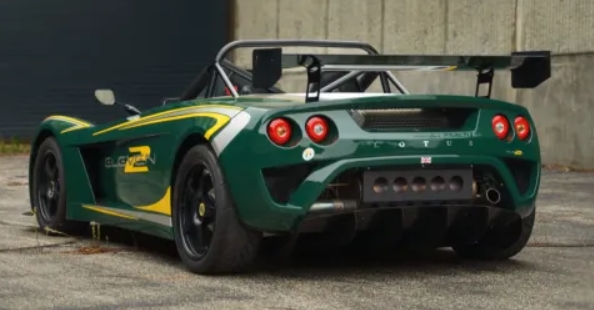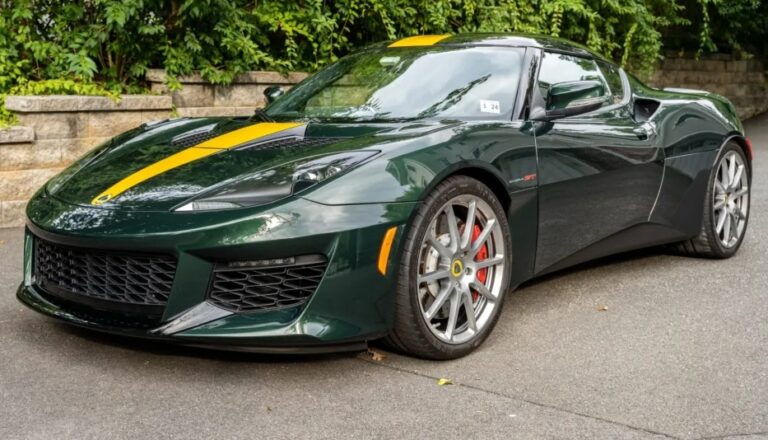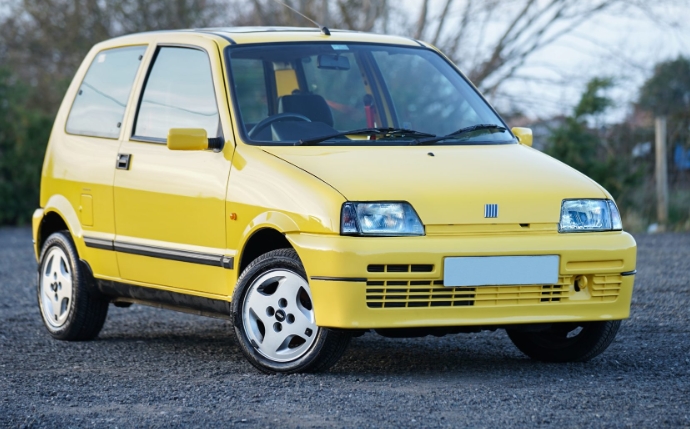From Track Day Warrior to Road-Legal Rocket: The Evolution of the Lotus 2-Eleven and 3-Eleven
Lotus, a name synonymous with lightweight performance and pure driving exhilaration, has a rich history of crafting machines that prioritize the driver above all else. Within this storied lineage, the 2-Eleven and its successor, the 3-Eleven, stand out as particularly aggressive and focused interpretations of the Lotus philosophy. These cars weren’t designed for comfortable commuting or concours d’elegance; they were built to dominate the racetrack and thrill on the open road. This article delves into the fascinating evolution of the Lotus 2-Eleven and 3-Eleven, tracing their development, exploring their models and trim levels, and celebrating their enduring appeal.
The Genesis of Raw Emotion: The Lotus 2-Eleven (2007-2011)
The early 2000s saw a growing demand for track-focused, yet road-legal, sports cars. Enthusiasts craved the visceral experience of a pure performance machine without the complexity and cost of a full-blown GT racing car. Lotus, with its proven expertise in lightweight construction and agile handling, was perfectly positioned to answer this call. Thus, the Lotus 2-Eleven was born, debuting in 2007.
The 2-Eleven was a radical departure from Lotus’s more road-biased offerings. It stripped away creature comforts like air conditioning, power steering, and even a traditional windscreen in its most basic form, opting for a minimalist approach that prioritized weight reduction and driver engagement. Its design was unmistakably Lotus, featuring a sleek, aerodynamic silhouette that hinted at its track-bred capabilities.
Models and Trim Levels of the Lotus 2-Eleven:
The 2-Eleven was primarily offered in one core configuration, but with key optional packages that allowed customers to tailor the car to their specific needs, primarily for track use.
Lotus 2-Eleven (Standard): This was the baseline model. It featured a naturally aspirated 1.8-liter supercharged VVTL-i engine sourced from Toyota, producing approximately 252 horsepower. The chassis was a bonded aluminum extruded section chassis, a Lotus hallmark, providing immense rigidity. The body was constructed from lightweight composite panels. Crucially, the standard car came with a basic roll cage and was designed for track days. Buyers could opt for the “GT Pack” and “Race Pack” to further enhance its track prowess.
GT Pack: This popular option added a larger rear wing for increased downforce, a front splitter for improved aerodynamics, and a more robust braking system. It also included a removable windscreen and side screens, making it slightly more usable on the road while still maintaining its track focus.
Race Pack: For those who intended to spend the majority of their time on the circuit, the Race Pack was the ultimate upgrade. It featured fully adjustable racing dampers, stiffer springs, a limited-slip differential, and lightweight racing seats with harnesses. It also typically included a fire extinguisher system, further emphasizing its track-intended nature.
The 2-Eleven was renowned for its incredible agility, razor-sharp steering, and the raw, unfiltered feedback it delivered to the driver. Its lightweight construction meant that even with its relatively modest power output, it offered blistering performance. The absence of power steering, while demanding, contributed to a pure, mechanical connection between driver and machine. Braking was equally impressive, with powerful Lotus-branded calipers biting down on ventilated discs.
The 2-Eleven was a relatively niche product, appealing to a dedicated group of motorsport enthusiasts and track day regulars. It was a car that demanded respect and rewarded skill, embodying the Lotus ethos of “performance through light weight” in its purest form. Production of the 2-Eleven concluded in 2011, leaving a legacy of lightweight, exhilarating track day cars.
.

.
Stepping Up the Game: The Lotus 3-Eleven (2015-2020)
After a brief hiatus, Lotus unveiled its spiritual successor to the 2-Eleven in 2015: the Lotus 3-Eleven. The intention was clear: to take the concept of a lightweight, track-focused, road-legal supercar to an entirely new level. The 3-Eleven was not merely an evolution; it was a revolution, boasting significantly enhanced performance, more sophisticated engineering, and a bolder, more aggressive aesthetic.
The 3-Eleven was designed from the ground up as a no-compromise performance machine. It retained the core Lotus principles of lightweight construction and exquisite handling but elevated them with a more potent powertrain and advanced aerodynamic solutions.
Models and Trim Levels of the Lotus 3-Eleven:
The 3-Eleven was offered in two distinct variants, catering to different levels of track day enthusiasm and road usability.
Lotus 3-Eleven (Road): This was the more accessible version, designed to be street-legal in most markets. It featured a powerful 3.5-liter supercharged V6 engine, sourced from the Evora, but tuned to produce approximately 410 horsepower. While it retained the lightweight composite body, it included a full windscreen, side windows, and a more integrated interior with creature comforts like heating and sound insulation. It also featured a slightly less aggressive aerodynamic package compared to its track-oriented sibling. The “Road” version was about bridging the gap between exhilarating road driving and occasional track use.
Lotus 3-Eleven (Race): This was the unadulterated track weapon. Building upon the foundation of the Road version, the Race variant pushed the performance envelope considerably. The same 3.5-liter supercharged V6 engine was tuned to an astonishing 460 horsepower. The aerodynamic package was significantly more aggressive, featuring a larger rear wing, a more pronounced front splitter, and a flat underbody for enhanced downforce. The Race version also omitted the windscreen and side windows, opting for a driver-focused cockpit with a roll cage and racing seats. Further track-focused enhancements included a race-tuned suspension, a six-speed sequential gearbox (in some later configurations), and a more advanced braking system. The Race version was explicitly not road-legal and was intended for dedicated track racers and serious track day enthusiasts.
The transition from the 2-Eleven to the 3-Eleven was marked by a substantial leap in performance. The supercharged V6 engine provided a potent surge of power and torque, propelling the lightweight chassis with incredible urgency. The 3-Eleven’s handling was, as expected from Lotus, exceptional. Its sophisticated suspension, meticulously tuned by Lotus engineers, provided incredible grip and responsiveness, allowing drivers to push the limits with confidence.
Aerodynamics played a crucial role in the 3-Eleven’s performance. The aggressive styling of both models, particularly the Race variant, was functional, generating significant downforce to keep the lightweight car planted at high speeds. The braking system, featuring large, powerful calipers and discs, provided immense stopping power, essential for track use.
The 3-Eleven was a triumphant return for Lotus’s minimalist, track-focused sports car philosophy. It captured the essence of what made the 2-Eleven so special but amplified it with modern technology and a dramatic increase in performance. The Road version offered a thrilling, albeit raw, driving experience for passionate road users, while the Race version provided a potent and accessible platform for aspiring racers and dedicated track enthusiasts.
Production of the Lotus 3-Eleven concluded in 2020, marking the end of an era for these exceptional machines. Both the 2-Eleven and the 3-Eleven have cemented their places in automotive history as benchmarks for lightweight, driver-focused performance.
The Enduring Legacy
The Lotus 2-Eleven and 3-Eleven are more than just cars; they are statements of intent. They represent a return to the fundamental principles that forged Lotus’s reputation: purity of purpose, exhilarating performance, and an uncompromising focus on the driver.
The 2-Eleven, with its minimalist approach and accessible power, carved out a niche as the ultimate track day toy. It demonstrated that immense enjoyment could be derived from a lightweight car with exceptional handling, even with a relatively modest engine. Its optional packs allowed for a degree of customization, tailoring it for serious track use.
The 3-Eleven, on the other hand, took the concept to a new stratosphere. With its significantly more powerful engine, advanced aerodynamics, and the clear distinction between its Road and Race variants, it offered a level of performance that rivaled much more expensive supercars. The Road version provided a visceral and engaging experience for the open road, while the Race version was a pure, unadulterated track machine.
Both the 2-Eleven and 3-Eleven, despite their different eras and performance levels, share a common DNA. They are cars that demand driver involvement, rewarding skill and precision with an unparalleled sense of connection to the road and track. They are celebrations of lightweight engineering, agile handling, and the sheer joy of driving. While production of these iconic models has ceased, their legacy continues to inspire, and their presence on the track and in the garages of passionate enthusiasts ensures their enduring appeal. They remain potent reminders of Lotus’s unwavering commitment to creating cars that are, above all else, thrilling to drive.







